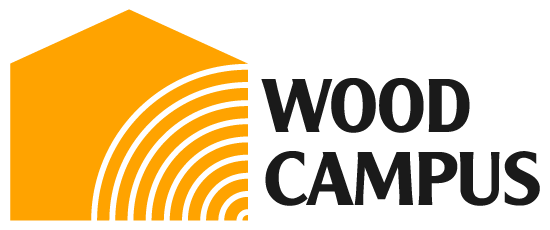Sustainable procurement
Sourcing wood from sustainably managed forests helps encourage biodiversity. It increases forestation and maximises CO2 absorption.
Facts about procuring sustainable wood products
Temperate or tropical hardwood?
- Temperate hardwood comes from forests across the Eastern United States, Canada, Europe, China, Japan, and parts of Russia.
- Tropical hardwood comes from continents surrounding the Equator; mainly Central and West Africa, Southeast Asia and South America. Collectively, these forests contain 47% of the total global growing stock.
Natural durability & aethetics
- Both temperate and tropical hardwood are popular in UK construction due to their natural durability.
- Oak and sweet chestnut are ideal temperate hardwoods for external construction and are commonly used in traditional timber frame buildings.
- Tropical hardwood’s qualities include strength and resistance to abrasion or impact but they are often chosen for their aesthetics. Fire resistance tends to be better in hardwood products due to its higher density.
Sustainable forest management
- Forests need to be managed to be sustainable. Using a forest for logging purposes means more growing trees which locks carbon in timber, and this outweighs the emissions released through transport and felling. Several million people are employed in sustainable forestry worldwide.
- The United Nations programme for Reducing Emissions from Deforestation and Forest Degradation (REDD+) offers incentives to developing countries to reduce deforestation and forest degradation while improving conservation, sustainable management of forests and enhancement of forest carbon stocks.
- Illegal logging, which includes illegal harvesting, processing or trading in timber and timber products, is a global issue. It is more common in developing countries where there are wider governance problems. Consumer countries are also accountable where timber and timber products are imported without ensuring they are legally sourced. The timber industry addresses this issue on various levels.
Certification & verification systems
- Forest certification systems such as the Programme for the Endorsement of Forest Certification (PEFC) and the Forest Stewardship Council (FSC) aim to protect biodiversity, ecosystem services, local employment, and indigenous peoples’ rights within the forest through sustainable management. Both PEFC and FSC maintain comprehensive databases where suppliers and certificates can be checked. The schemes operate in very similar ways. FSC deals more with tropical forestry and plantation regimes whereas PEFC has adopted a group certification process for small-scale landowners. Most certification bodies are equipped to adhere to PEFC and FSC. Both schemes provide equal benefits to the forest industry.
- In Southeast Asia, the Malaysian Timber Certification Council (MTCC) set up a certification scheme, the Malaysian Timber Certification Scheme (MTCS), which is the first of its kind in the region to be endorsed by PEFC.
- In the United States the Lacey Act bans trafficking in illegal timber and timber products. In Europe, the EU Timber Regulation (EUTR) prohibits the placing of illegally harvested timber on the European market. This means there must be a record of the supplier, the product’s timber species, where it comes from, the amount bought, and a risk assessment on the product. The Forest Law Enforcement, Government and Trade (FLEGT) action plan aims to reduce illegal logging by strengthening sustainable and legal forest management, improving governance and promoting trade in legally produced timber.
- Verified Legal Compliance schemes (VLCs) work with timber regulations that require companies sourcing timber to have a due diligence system in place. They ensure all the administrative requirements have been completed and that any applicable and relevant laws and regulations related to forestry have been met. The predominant VLCs are run by the Rainforest Alliance (SmartWood) and Bureau Veritas (OLB) and are particularly important in West and Central Africa.
- TRADA operates its own chain of custody scheme for forest products that aren’t FSC or PEFC certified. It recognises other certification schemes such as MTCC and verification schemes such as Bureau Veritas’ OLB, FLEGT, and the Rainforest Alliance VLC.
- A Voluntary Partnership Agreement (VPA) is a legally binding trade agreement between the European Union and a timber-producing country outside the EU to ensure timber products come from a legal source.
How to procure sustainable hardwood
- Procurement Policy: Check the timber or timber products you source are legal by putting in place a procurement policy enforcing a preference for certified timber and timber products. This ensures it is responsibly, lawfully and sustainably sourced.
- Due Diligence: Have enhanced due diligence systems in place when timber and timber products cannot be certified. The supplier you use should still be able to verify the source. Be vigilant about the risks of illegal timber in your supply chain.
Take the Online CPD seminar
Use it or lose it
Watch this video on why you should use tropical hardwood from sustainably managed sources.
Download our fact sheet HERE.
Example: Interholco in the Congo Basin
Interholco manages the largest single FSC-certified forest in Africa covering a total area of 1.1 million hectares. Its production plant, IFO, employs 1,000 workers from the local area and takes responsibility not only for sustainably managing the local forest, but also for improving the lives of the local communities.
There is a specific focus on employment (including health and safety, training and pension schemes), protection of wildlife, resource efficiency, and social performance (including schooling, health care, electricity, drinking water, and road construction).
Interholco recognises the benefits of sustainable forest management in the Congo Basin and how this incentivises the local economy against using the land for other purposes, leading to deforestation.
Example: FLEGT implementation in Indonesia
Indonesia is the first country in the world to export FLEGT-licensed timber and timber products to the European Union. Within the EU, the UK is the largest importer of Indonesian forest products – approximately £200m, a quarter of EU imports by value. UK imports have been trending upwards since 2013, with increase distributed across a range of product groups including paper, plywood, and wooden doors and furniture. Latest total export volumes from Indonesia valued at around $10 billion (annually).
